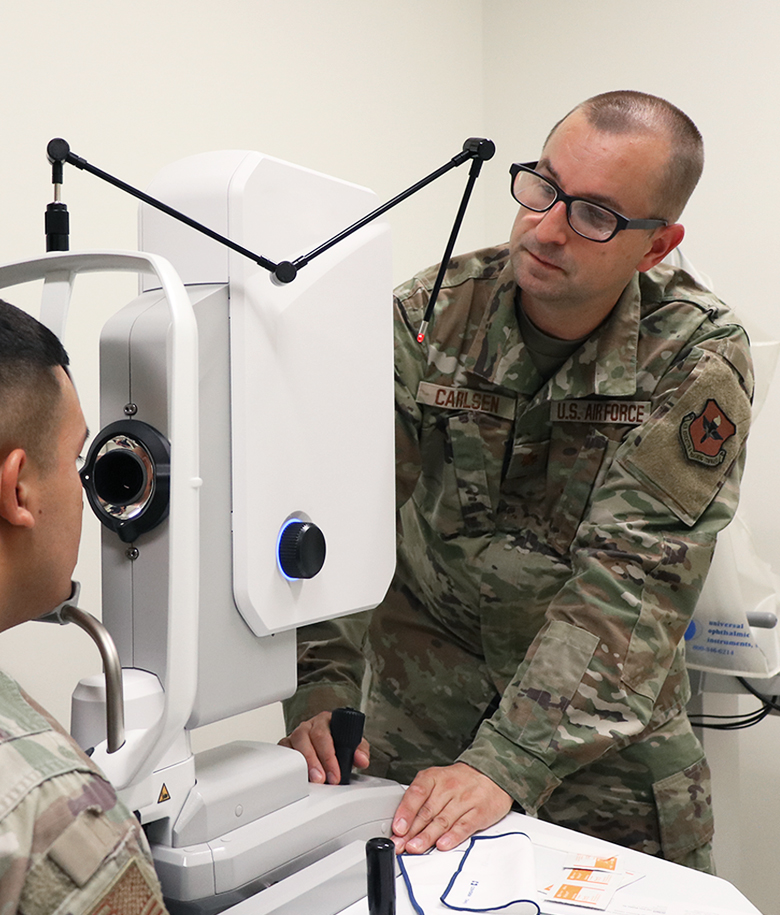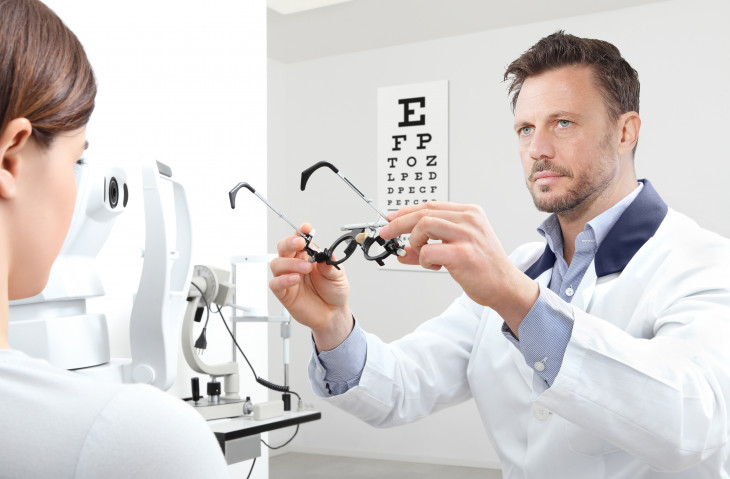Checking Out the Most Recent Technical Developments in Optometry and What They Mean for Optometrists
In the ever-evolving area of optometry, recent technical advancements are reshaping exactly how practitioners come close to eye treatment. From the precision of Optical Comprehensibility Tomography to the nuanced understandings provided by AI-driven diagnostic devices, these developments are setting brand-new standards in patient evaluation and therapy. Teleoptometry is positioned to redefine access, ensuring that expertise goes beyond geographical limitations. As these advancements permeate the technique, eye doctors are faced with the challenge of accepting these tools to boost patient results. Yet, the inquiry continues to be: exactly how will these technological shifts redefine the duties and responsibilities within the profession?
Innovations in Diagnostic Equipment
Advancing the field of optometry, technologies in analysis tools have changed the method eye care specialists examine and detect aesthetic disabilities and eye problems. The previous years has actually experienced significant technical advancements, making it possible for more thorough and exact evaluations.
One more trick advancement is the intro of sophisticated corneal topography systems, which map the surface curvature of the cornea with precision. These tools are particularly valuable for suitable call lenses and diagnosing corneal problems. Furthermore, digital retinal imaging has actually transformed traditional ophthalmoscopy, supplying comprehensive, breathtaking sights of the retina that promote extensive visual exams.
The advancement of wavefront aberrometry has actually also been crucial, allowing the evaluation of refractive errors with unparalleled accuracy (Optometrist Chino). This modern technology helps in tailoring corrective lenses and improving medical end results for refractive surgical procedures. Collectively, these diagnostic improvements encourage eye doctors to provide exceptional individual treatment, making sure very early intervention and customized treatment strategies, inevitably improving visual health results
AI in Individual Management
Building on the foundation of advanced diagnostic tools, the consolidation of man-made intelligence (AI) in person administration represents a transformative jump for optometry. AI systems are significantly employed to enhance effectiveness, accuracy, and personalization in patient treatment.
Furthermore, AI-driven systems help with structured client interactions and management processes. Automated organizing, digital consultations, and customized follow-up plans not just improve person fulfillment but likewise optimize time administration for specialists. These systems can triage patients based upon the seriousness of their problems, guaranteeing that those in important requirement get punctual focus.
In addition, AI enhances decision-making by supplying optometrists with evidence-based referrals and therapy pathways. By incorporating data from electronic health records, AI devices provide understandings that inform medical choices, decreasing the threat of errors and enhancing individual end results. As AI proceeds to evolve, its duty in person management will likely expand, improving the landscape of optometric treatment.
Advancements in Retinal Imaging
In the realm of optometry, retinal imaging has actually seen remarkable technological developments that are boosting analysis capabilities and individual care. Technologies such as Optical Coherence Tomography (OCT) and fundus digital photography have actually transformed how optometrists visualize and examine the retina. OCT, particularly, gives high-resolution, cross-sectional photos of the retina, permitting the comprehensive exam of its layers. This ability is important for very early discovery and management of problems like glaucoma, diabetic person retinopathy, and age-related macular degeneration.
Boosted imaging modalities like OCT angiography are more refining analysis accuracy. This non-invasive strategy maps blood flow in the retina, supplying crucial understandings right into vascular health and wellness without the requirement for dye shots. In addition, flexible optics innovation is being integrated right into retinal imaging systems to fix eye aberrations, supplying extraordinary picture clarity. Such developments help with the recognition of min retinal adjustments that could represent condition development.
Furthermore, improvements in synthetic intelligence are increasing retinal imaging by making it possible for automatic analysis of big datasets. These systems help optometrists in recognizing patterns a sign of pathology, thus boosting analysis accuracy and efficiency. Jointly, these technologies are transforming retinal imaging right into a keystone of modern eye care, improving results and increasing restorative opportunities.
Teleoptometry's Expanding Duty
Teleoptometry is increasingly becoming an important part of eye treatment, driven by developments in digital communication and diagnostic devices. As optometry accepts electronic makeover, teleoptometry promotes remote appointments, allowing optometrists to prolong their solutions past standard boundaries. This is go specifically beneficial in country and underserved areas where access to specialized eye treatment is usually minimal. By leveraging high-resolution video clip conferencing and progressed retinal imaging, eye doctors can perform extensive eye tests from afar, guaranteeing timely medical diagnosis and treatment.
The combination of man-made intelligence (AI) additional enhances teleoptometry, making it possible for the analysis of aesthetic information and helping in the detection of eye conditions such as glaucoma and diabetic person retinopathy. AI-powered formulas can quickly analyze complex imaging information, supplying eye doctors with valuable understandings that reinforce professional decision-making.
Moreover, teleoptometry sustains continuity of treatment with seamless integration with digital health documents (EHRs), allowing optometrists to preserve extensive individual histories. This makes certain that patients receive regular and individualized treatment even when speaking with different specialists.
Regardless of these benefits, obstacles stay, including guaranteeing data safety and security and taking care of individual assumptions. Teleoptometry represents a substantial stride in the direction of even more available, efficient, and patient-centered eye care. As innovation develops, its function is positioned to broaden better.

Future Fads in Eye Care
A myriad of cutting-edge trends is set to improve the future of eye care, driven by technological innovations and the developing demands of patients. One substantial fad is the assimilation of fabricated intelligence (AI) in diagnostics, which guarantees to boost the accuracy and efficiency of eye examinations. AI formulas can analyze huge quantities of information from retinal photos, possibly detecting conditions like diabetic retinopathy and glaucoma earlier than conventional techniques.
Moreover, individualized medication is gaining grip in optometry, with genetic testing notifying tailored therapy strategies. This approach intends to maximize individual outcomes by tailoring interventions to specific genetic accounts. Wearable technology, such as clever call lenses, is also coming up, using real-time surveillance of intraocular stress or sugar degrees, thus providing continuous understandings right into eye and systemic health and wellness.
The fostering of augmented truth (AR) and online reality (VIRTUAL REALITY) in training and patient education and learning is one more arising fad. These technologies use immersive experiences that can improve understanding and abilities both for people and eye doctors. As these trends advance, eye doctors need to remain abreast of technological advancements to provide sophisticated more tips here care, ensuring improved client outcomes and satisfaction in the dynamic landscape of eye care.
Conclusion

Collectively, these diagnostic innovations empower optometrists this website to deliver exceptional person treatment, guaranteeing early treatment and tailored therapy strategies, eventually boosting aesthetic wellness outcomes.

As these modern technologies continue to progress, eye doctors must adapt and incorporate them right into technique, eventually optimizing operations efficiency and elevating the standard of eye treatment supplied to patients.